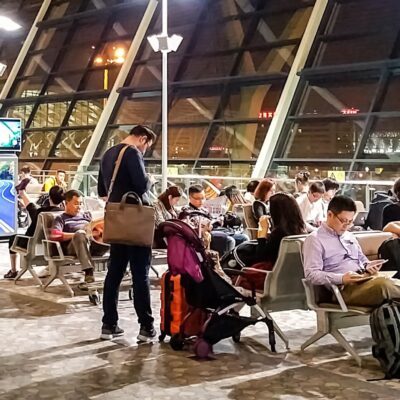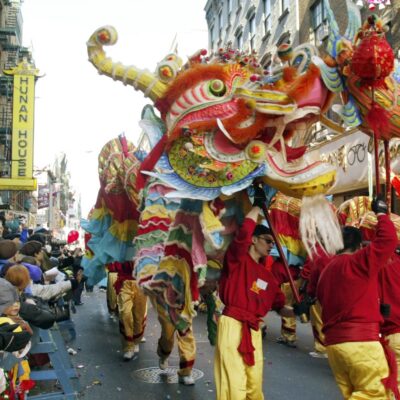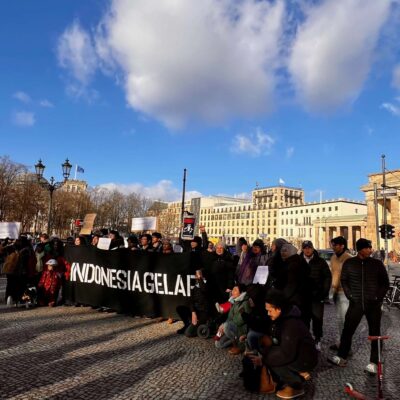The relationship between the state and civil society in China has long been a state-dominant one. The space for civil society actors is restricted and has become even more restricted in recent years. In January 2020 as COVID-19 spread, NGOs in China were quickly mobilised to help support government public health policies not long after the city of Wuhan, where COVID-19 originated, entered lockdown. Chinese NGOs, especially grassroots NGOs, were vulnerable and marginalised as China’s government maintained a restrictive and repressive approach.
As the pandemic continued into its third year, China maintained its fundamentally unchanged ‘zero-COVID’ strategy. Abrupt lockdowns, mass virus testing, a mandatory Health Code app which ranks each individual as ‘red’, ‘yellow’ or ‘green’ and restricts their movements accordingly, and the random cancellation of flights and activities, have become a ‘new normal’. NGOs in China have been negatively impacted by these intrusive COVID-19 prevention and control measures and many of them face financial difficulties in a time when the national economy is in turbulence. How to survive such an environment has become a paramount test for Chinese NGOs.
The graduated mobilisation of NGOs in the early days of the pandemic
On Jan 23, 2020, Wuhan, a city of 12 million people, entered lockdown. To support the frontline medical staff and embattled residents, public donations quickly flooded in. The same day, the Wuhan Municipal COVID Prevention and Control Command Center issued a public notice, designating two government-organised NGOs (GONGOs)—the Wuhan Charity Federation and the Wuhan Red Cross—as verified recipients of public donations. Three days later, this was superseded by a directive of the Ministry of Civil Affairs which mandated that all donated money and general supplies for Wuhan collected by charitable organisations must be transferred to five designated GONGOs based in Hubei province or Wuhan city and, except for earmarked donations, all donations should be distributed by the command centers. Activities of non-local charitable organisations and volunteer organisations were restricted and they were not allowed to dispatch personnel or volunteers into Hubei.
Despite some voices calling for a greater role and more space for ordinary NGOs, during the Wuhan outbreak the Chinese government assigned different kinds of NGOs with different roles based on the needs and interests of the government and the connection between government and NGOs. Professors Kang Xiaoguang and Han Heng coined the term ‘graduated controls’ to analyse the NGO regulation strategy by the Chinese government. They argue that in an authoritarian context, NGOs have double attributes: one to potentially challenge the regime and the other to play a supportive role by providing public goods. The government applies controls over NGOs according to the interests of the government. For instance, NGOs with very challenging attributes such as any anti-CCP organisations have no room to exist in China; but grassroots NGOs who help with care of the needed may be tolerated by the government. Inspired by this, I call Chinese government’s strategy in early 2020 one of ‘graduated mobilisation’. NGOs with closer ties to the government were assigned with tasks of greater importance like gathering donations and helping maintain the lockdown order. This can be shown by the official documents mentioned below.
Trusted GONGOs like the Red Cross and the Charity Federation were designated as authorised donation recipients. This allowed them to gather a high level of resources and deploy them as needed. The Ministry of Civil Affairs relaxed some restrictions on charitable organisations nation-wide in mid-February 2020 (after criticism from the public), by allowing those with public fundraising qualifications to raise funds. But given the fact that at the time there were around 1,260 charitable organisations in China eligible for public fundraising, this move should be viewed as more of a privilege granted to trusted partners than a welcome gesture to all NGOs.
In China, industry associations and chambers of commerce are also considered as a kind of NGO and expected to act as a ‘bridge’ between the government and their economic constituencies, but in most cases they are subject to tight control by the government. In early 2020, when the national economy was hit hard due to a nation-wide shut-down of production, industry associations and chambers of commerce were required to follow state policies. In early February, 2020, after the Spring Festival holidays, the Ministry of Civil Affairs issued a directive calling for their total support for official policies and active cooperation with local authorities in relation to implementing prevention and control measures. To avoid mass gatherings, these national industry associations, chambers of commerce, and enterprises were told to suspend usual production and work until further notice. They were also told to support frontline medical staff and medical manufacturers were required to produce medical supplies and medical devices. When COVID-19 infections in Wuhan began to be brought under control by the end of February 2020, the main aim of the government became the resumption of normal work and production. On February 27, the National Development and Reform Commission and the Ministry of Civil Affairs co-issued a notice further mobilising industry associations and chambers of commerce at all levels to help serve this purpose.
Grassroots NGOs continued to be utilised at the community level. On January 30, 2020, the Chinese government issued an urgent notice, requiring urban and rural community organisations to carry out COVID-19 prevention and control measures actively and effectively. The aim of this notice was to build a full command chain from top down and make community organisations (residents’ committees and villagers’ committees who are agents of grassroots-level government) responsible for implementing prevention and control measures in every community. These organisations were assigned a series of tasks including formulating and implementing prevention and control measures under the guidance of local governments, monitoring key populations, and daily reporting to superiors on the local pandemic prevention situation. This required the involvement of huge numbers of personnel including grassroots NGOs and individuals such as social workers and volunteers. Compared to the robust presence of grassroots NGOs after the Wenchuan earthquake in 2008, the pandemic this time has not created larger space for them.
In general, graduated mobilisation characterised the state’s engagement of domestic NGOs during the first wave of the outbreak in early 2020. The most reliable organisations—first, foundations with an official background and then charitable organisations as well—acted as a pool to absorb public donations. Industry associations and chambers of commerce, with their close ties with the business sector, were expected to act as loyal coordinators—forfeiting profits in favour of work aimed at controlling COVID-19 infections. Grassroots organisations were mobilised under the guidance of local government, acting as service providers. This graduated mobilisation strategy was nothing short of a state-dominant model, which successfully resulted in the control of the first wave of COVID-19 in China. However, it demonstrates that in this diminished space, the autonomy of civil society actors and NGOs have been further subordinated to state orders.
Continued restrictions on NGOs’ activities and finances due to China’s ‘zero-COVID’ policy
After the end of lockdown in Wuhan, China shifted from emergency status to a new period officially referred to as a ‘regularised stage of epidemic prevention and control’. ‘To prevent inbound cases and domestic resurgence’ has become the main strategy for the official ‘zero COVID’ policy. China continues to monitor the number of COVID-19 infections through mass testing and technical tools such as the Health Code system. If a city records zero cases for a specified period of time, public health-related restrictions for businesses and citizens are relatively relaxed; but if new cases, or even close contacts are detected in a particular area, restrictive measures are imposed, sometimes including lockdowns of entire cities. If an outbreak occurs, local officials may be fired by the central government for what is deemed to be their negligence. This is a clear incentive for local officials at grassroots level to keep taking action such as cancelling mass gatherings to prevent potential outbreaks.
The work of NGOs continues to be restricted if it might inadvertently cause the virus to spread. Facilities such as schools, hospitals and other medical facilities, and nursing homes are required to remain infection-free. They tend to restrict entry to outside visitors, which made them inaccessible to some NGOs such as those serving rural students, wounded workers, or elderly people. Further, in the name of infection prevention, NGO-organised activities can be called off by police if they are deemed politically sensitive.
In April 2020, China Development Brief, a publication with information on China’s NGO sector, together with 13 domestic NGOs conducted a survey on how NGOs in China were impacted during the pandemic. Of all 433 effective respondents, approximately 78 percent claimed that the most significant impact of the pandemic was the disruption of project implementation. More specifically, since the pandemic it had become more challenging for them to access their communities, and the willingness of communities to get involved in NGO activities was diminished. Some NGOs’ ongoing programs were suspended or even cancelled by their community collaborators. The second most significant impact reported in the survey was financial problems, as reported by 55.7 percent of survey participants. A reduction of funding was reported as a major problem. The report did not delve into the reasons behind this but it is conceivable that to achieve ‘zero-COVID’, governments have allocated a larger percentage of their budgets for pandemic prevention and control measures, leaving less for other sectors. Due to the economic downturn, the situation of other domestic sponsors such as enterprises and foundations is not necessarily any better than NGOs.
One year later, in March 2021, the same team conducted a follow-up survey with 399 respondents. This time, a higher percentage of respondents reported difficulties with project implementation (79.4 percent) and fundraising (66.9 percent). Around 55 percent of respondents claimed that their real income was down by more than 30 percent compared to the same period in the previous 12 months.
Although these impacted organisations called for more support and aid from the government, the ‘zero-COVID’ strategy has barely been changed except to become more intricate as more infectious variants of COVID-19 variants spread. There has been some piecemeal relief measures for NGOs implemented by government, such as the partial refund of unemployment insurance and a temporary 50 percent reduction in social security contributions. These changes may partially help reduce NGOs’ expenditure, but they have not opened up new alternative sources of much-needed funding.
In recent years, as a consequence of the tightened grip on NGOs’ activities in China, many domestic NGOs have been forced to cut financial connections with their overseas sponsors and become largely dependent on domestic funding, whether it be governmental procurement, sponsorship from domestic charities, or crowd-funding. Some NGOs that previously relied on overseas sponsorship have been forced to close due to financial loss and recurring political harassment during the pandemic.
How NGOs are trying to adapt to ‘zero-COVID’
Despite significant hurdles in project implementation and financial hardship, Chinese NGOs have adapted as much as possible. With the rise of some domestic online fundraising platforms, crowd-funding had long been explored by some NGOs even before the pandemic and it has been a feasible way for NGOs to partly manage recent economic difficulties.
In mid-2020, Sunflower (not its real name), an NGO dedicated to the rights of women workers and migrant children, issued an open letter on social media calling for public donations to keep them afloat. Due to a sudden loss of financial support, they needed 100,000 yuan. Ting (not her real name), the writer of the letter and the founder of Sunflower, wrote about her own early experiences as a factory worker, how she started Sunflower and the difficulties it currently faced. The moving letter soon went viral. Contributions poured in within hours, and a total of about 560,000 yuan (AU$118,000) was raised from 20,000 donations, equivalent to twice the organisation’s previous annual budget. It was a triumph for a grassroots organisation with only four full-time employees. In an attempt to develop a more sustainable relationship with their donors, Sunflower launched an online monthly donation project in mid-2021, trying to transform these one-off donations into regular support. Now they have registered more than 1,500 monthly donors. Sunflower’s story is not a single case. During the pandemic, many grassroots NGOs launched either one-off crowd-funding or monthly donation projects via online crowd-funding platforms to get through financial difficulties. Although most were not as successful as Sunflower, this approach could offer a well-needed reprieve.
Grassroots NGOs also provide assistance for individuals in financial distress. For example, a support group called Green Grass (not its real name) was formed by women migrant workers in an ‘urban village’ where workers from other parts of China find cheaper local accommodation. In 2020, affected by the pandemic, some of these women workers, mostly mothers, became unemployed after their workplaces closed down. In an attempt to compensate for the loss of income, they decided to offer cleaning services to others. Ling (not her real name), the main coordinator of the group, had knowledge of labour rights and extensive social networks in the local community. She started to teach the newly unemployed women about their labour rights and introduced them to potential clients nearby. These new job opportunities not only helped the migrant workers weather the storm, but also benefited Green Grass because it took a small commission each time workers were matched with clients.
Engaging in rights-advocacy activities is deemed sensitive and confrontational in China. Recent years have seen Chinese NGOs adopting more compliant strategies under heightened state pressure. But some of them still explore safer ways to speak out for the underprivileged. Through various research methods such as online questionnaires, in-depth interviews, and focus groups, NGOs have conducted surveys by themselves or in collaboration with other researchers on topics including workers’ conditions during the first wave of COVID-19 and the impact of the pandemic on ‘ordinary’ women and migrant workers. Through these reports, ordinary people and marginalised groups have been given an opportunity to speak out. They offer an invaluable record of social hardship during the pandemic and the consequences of China’s pursuit of ‘zero-COVID’.
In brief, throughout the pandemic, the Chinese government has maintained a state-dominant strategy over NGOs. The Chinese government’s continuing COVID-19 prevention and control measures, plus the economic downturn, have disrupted NGOs` program implementation and plunged them into financial strife. At a time when the government has provided little support, Chinese NGOs have striven to explore new fundraising methods, support people in need, and give considerable attention to disadvantaged groups. All these efforts have shown the resilience of Chinese civil society.
(Sunflower, Ting, Green Grass, and Ling are all pseudonyms.)
Image: A retail store in Shenzen, January 2021. Photo by Joshua Fernandez on Unsplash.




